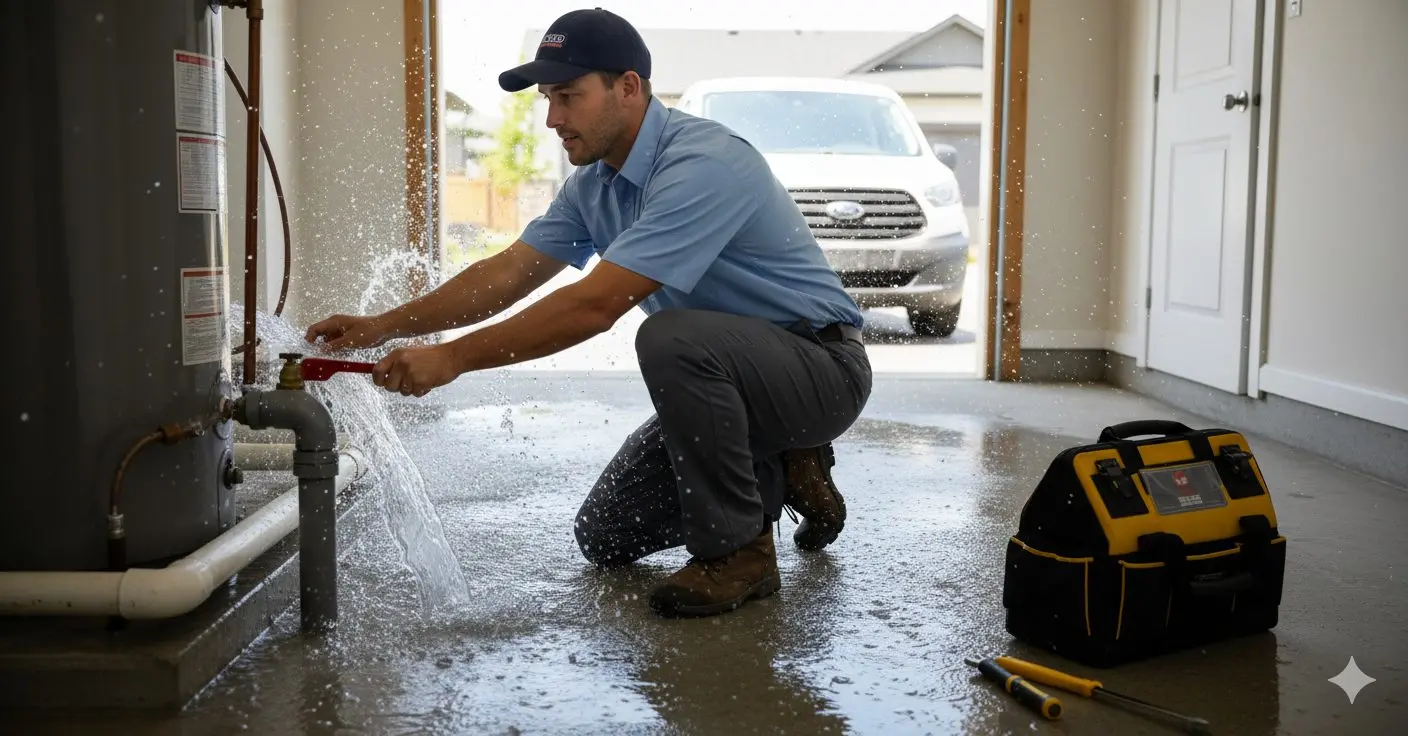Few home disasters are as sudden — or as damaging — as a burst pipe. Within minutes, gallons of water can flood your home, ruin walls and floors, and create the perfect conditions for mold.
Knowing what to do immediately can save you thousands in repairs and protect your home’s structure.
In this guide, Xceed Plumbing, your trusted local experts, explains the causes of burst pipes, how to respond effectively, and the steps you can take to prevent future plumbing emergencies.
Common Causes of Burst Pipes
Even the strongest plumbing systems can fail under certain conditions. Understanding why pipes burst can help you stop it from happening again.
Freezing Temperatures – When water freezes inside a pipe, it expands and increases pressure until the pipe cracks or splits. Uninsulated pipes in basements, attics, and outdoor areas are most at risk during winter.
Corrosion Over Time – Older metal pipes (especially galvanized steel or iron) naturally corrode and weaken, leading to ruptures after years of wear.
Excessive Water Pressure – Consistent high pressure puts stress on pipe joints. Anything above 80 psi can cause plumbing lines to burst unexpectedly.
Clogs and Blockages – Severe blockages can trap water, increasing internal pressure. Eventually, the buildup forces weak spots to burst.
Poor Installation or Aging Infrastructure – Old or poorly joined pipes can loosen over time, especially under vibration or shifting soil.
What to Do When a Pipe Bursts
A burst pipe requires quick thinking and calm action. Follow these steps immediately.
Turn Off the Main Water Supply
Find your home’s main shut-off valve — usually near the water meter or where the water line enters the building. Turn it clockwise to stop water flow instantly. This prevents further flooding and buys you time.
💡 Pro Tip: Make sure every household member knows where this valve is located.
Shut Off the Electricity
If water is near outlets, switches, or appliances, turn off power to the affected area at the breaker box to avoid electrocution risks.
Drain the Remaining Water
After shutting off the main valve, open all cold taps to release pressure. Then flush toilets and open hot water taps to drain the system. This helps reduce residual water and pressure inside pipes.
Remove Standing Water
Use towels, mops, or a wet/dry vacuum to remove as much water as possible. The faster you dry the area, the lower the risk of mold growth or structural damage. If flooding is extensive, call a water restoration service after the plumber fixes the pipe.
Call a 24/7 Emergency Plumber
Once the situation is stable, contact Xceed Plumbing’s 24-hour emergency team. Our licensed experts quickly locate the burst, repair or replace the damaged section, and check your system for additional weak spots. We carry advanced tools like moisture sensors and leak detectors to ensure every hidden issue is resolved.
Document the Damage
Take photos or videos of all affected areas — walls, flooring, furniture, and the pipe itself. This evidence is important for insurance claims. Then, contact your insurance company and provide documentation of the burst and resulting water damage.
How Professionals Repair Burst Pipes
Depending on the location and extent of damage, professionals may use different methods.
-
Small Cracks or Pinholes: Temporarily sealed with epoxy or pipe repair tape, then fully replaced to prevent future leaks.
-
Split or Burst Sections: The damaged section is cut out, and a new pipe piece is welded, soldered, or fitted using compression joints.
-
Underground Leaks: Special acoustic or infrared detection tools pinpoint hidden leaks without extensive digging.
-
Full Re-piping: If your plumbing is outdated or severely corroded, a full re-piping may be recommended for long-term safety.
How to Prevent Burst Pipes in the Future
Prevention is always cheaper than emergency repairs. Follow these simple practices:
-
Insulate exposed pipes, especially in basements, crawl spaces, and garages.
-
Keep indoor temperatures above 55°F (13°C) during winter.
-
Install a pressure-reducing valve if your water pressure is too high.
-
Replace old pipes with modern PEX or copper materials.
-
Schedule annual inspections with Xceed Plumbing to detect corrosion or weakness early.
Frequently Asked Questions
Will insurance cover a burst pipe?
Most insurance policies cover sudden and accidental water damage, but not long-term leaks or neglect. Document everything for faster claims.
Can I fix a burst pipe myself?
You can apply a temporary patch to stop leaks, but professional repair or replacement is always required for safety and reliability.
How long does pipe repair take?
Minor repairs take 1–3 hours, while major or hidden bursts may require a full day depending on access and material.
What’s the average cost to fix a burst pipe?
Expect to pay between $200–$800, depending on the severity of the damage and accessibility.
Conclusion
When a pipe bursts, quick action can save your home from severe damage. Shut off the water, drain your system, and call Xceed Plumbing right away.
Our 24/7 emergency plumbing specialists will arrive fast, repair the damage, and ensure your home’s plumbing is safe for the future.
💧 Call Xceed Plumbing anytime — your trusted, local emergency plumbers ready to help 24/7.



